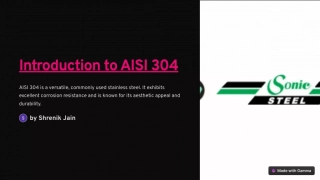Understanding Low Band Receive Antennas and the Beverage Flex-4X System
Low band receive antennas, including the Beverage Flex-4X system, are crucial for long-distance propagation on bands such as 160, 80, 60, and 40 meters. Operating on low bands presents challenges like large wavelengths, high levels of QRM and QRN, and the need for effective noise reduction strategies. Different types of low band RX antennas, such as Beverage antennas and loop types, offer solutions for improving reception and reducing interference. Explore the benefits and characteristics of low band antennas to enhance your radio communication experience.
- Low Band Receive Antennas
- Beverage Flex-4X System
- Antenna Types
- Noise Reduction
- Long-Distance Propagation
Download Presentation

Please find below an Image/Link to download the presentation.
The content on the website is provided AS IS for your information and personal use only. It may not be sold, licensed, or shared on other websites without obtaining consent from the author. Download presentation by click this link. If you encounter any issues during the download, it is possible that the publisher has removed the file from their server.
E N D
Presentation Transcript
Low Band Receive antennas and the BevFlex-4X System GARY SUTCLIFFE, W9XT DECEMBER 2019
What are the low bands & why should I operate there? Low bands are 160, 80, 60, & 40 Meters (Some include 30M) Generally the bands that provide long distance propagation at night As sunspot cycle continues at the minimum High bands won t open or will close early Low band propagation improves
Low band challenges Wavelengths are large, thus antennas are large Can be hard to fit in small city lots Good news: verticals very effective on low bands High levels of QRM & QRN Static caused by thunderstorms, often hundreds or thousands of miles away Short skip distances you can hear every station on the band
QRN & QRM characteristics Above about 18 MHz receiver internal noise dominates Below about 18 MHz atmospheric noise is the main source Great receiver sensitivity not needed QRN & QRM often come from a different direction than the desired signal Opportunity to reject other directions, reducing overall noise
Noise vs. signal strength Its not how loud the signal is, it is how loud it is compared to the noise Low band signals are often strong, but the noise is stronger Antenna directivity can reduce noise Low band RX antennas often have negative gain, but reduce noise more than the signal Some might need a pre-amp
Main types of low band RX antennas Beverage types Loop types Magnetic Loop (not covered in this talk)
Beverage Antennas Developed by Harold Beverage around 1920 while at GE Long wire towards direction of interest with terminating resistor at far end. Best if several wavelengths long
Beverage Antenna Null Direction 470 ohm Terminating Resistor Transformer COAX Beverage antennas are known as wave type antennas
Beverage Antenna Notes Longer is better, but at some point, extra length does not help. 800 -1200 is considered a good length Try to keep it straight and constant height above ground. 7 is common (above people, deer, etc.) Keep away from other metal objects, etc. Provide RX input protection if Bev is close to the transmit antenna Do what you can for rules above, but don t let perfect be enemy of good
Beverage On Ground (BOG) Beverage laid right on ground or buried just below surface. Different impedances Shorter because of lower speed of light in ground 200 a popular length Does not require supports and not visible
Low Band Loop Antennas A number of types K9AY Flag Pennant EWE VE3DO
K9AY Array Developed by Gary Breed, K9AY Described in September 1997 QST Original design used tapped transformer but binocular core are mostly used now Two diamond shaped loops at right angles Instantly switchable in 4 directions
K9AY Antenna Null Direction Two loops are typically installed at a right angles with ability to select 1 of 4 directions Transformer Terminating Resistor ~470 Ohm Coax Ground Rod
K9AY Array at W9XT Instant switching: NE, SE, SW, NW PVC pipe mast, ~24 Takes about 30 x 30 area Uses inexpensive CATV RG-6 75 ohm coax Pre-amp not needed
K9AY feed and switching Some changes from original K9AY design. Schematic and more info available at www.w9xt.com
Flag and Pennant antennas Direction Direction 7' 34' 8' Feed Line Feed Line Terminating Resistor Terminating Resistor Transformer Transformer 8' 7' 30' Flag Antenna Pennant Antenna Flag and Pennant antennas are typically raised 8 off the ground.
EWE and VE3DO Antennas Null Direction Null Direction 80M: 20' 160M: 40' 40 ' 80M: 5' 160M: 10' Terminating Resistor 15' Transformer Terminating Resistor Transformer COAX 80M: 1' 160M: 18-24" EWE Antenna COAX VE3DO Antenna EWE and VE3DO are mounted near the ground.
Introducing the BevFlex-4X System The most flexible receive antenna system ever!
BevFlex-4 Supported Antennas Beverage BOG Flag EWE VE3DO All configurations can be switched between forward and reverse directions
The BevFlex System History Developed by Geoffrey Mendenhall, W8GNM Long career in broadcast industry Several industry awards Nine patents IEEE Life Member Partner Ned Mountain, WC4X Deeply involved with testing from beginning. Original development in 2009 Commercially released as BevPro-1 2013 BevFlex-4 version released in 2016 Production/Sales contract awarded to Unified Microsystems May 1029 Redesigned by W9XT summer 2019 Improve ruggedness and weather resistance Improve manufacturability BevFlex-4X Commercially introduced August 2019
BevFlex-4X System Components Terminator (two per system) Replaces resistor terminators enables directional operation Feed Box Splits out signals from forward and reverse directions Switch box Terminates unused direction Selects desired direction
BevFlex-4X System Availability Unified Microsystems www.unifiedmicro.com DX Engineering https://www.dxengineering.com/ Ham Radio Outlet https://www.hamradio.com/
Conclusion Low band RX antennas really help you hear weak stations There are many designs which to chose from This and other presentations are available at http://w9xt.com/























